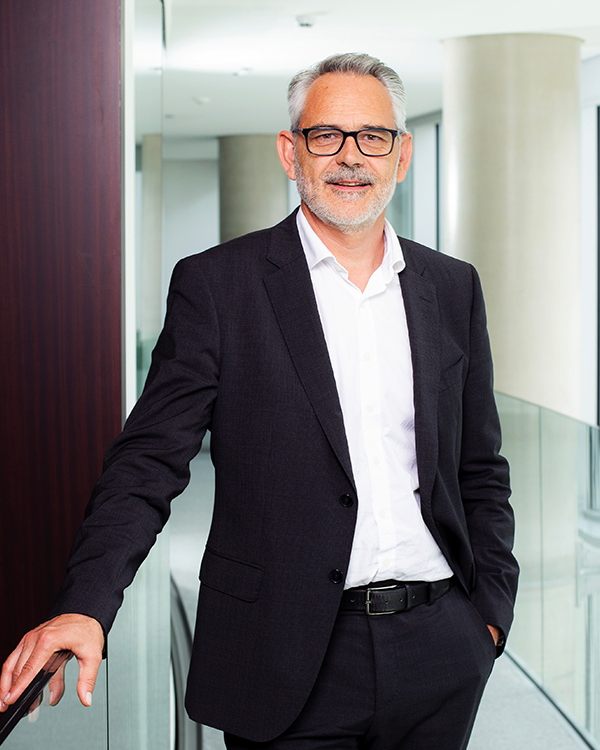2024 marks the start of a third year of collaboration between Servier and Aitia, the market leader for digital twins and causal AI technology. Together, we are developing “Gemini” digital twins with a view to identifying new therapeutic targets for pancreatic cancer, Parkinson’s disease and now glioma.

Fabien Schmidlin, Executive Director of Translational Medicine, R&D at Servier, looks at how this technology can contribute to research and its application for the health sector.
Fabien, in a few words, could you explain what “digital twins” are and how they function in practice?
Digital twins are the virtual representation of an organism including human patients, developed based on genetic, molecular, and clinical data collectively referred to as “multi-omics.” These data come from patient registries, as well as data from our clinical trials. Among other factors, they make it possible to simulate a disease’s progression and highlight the causal relationships and molecular connections between the various organs and cells and clinical outcomes.
It also becomes possible to simulate gene and protein knockdowns or response to a drug candidate at the individual patient level to help identify novel drug targets and drugs with corresponding patient populations.
The technology is based on iterative mathematical models, AI, analytical data and machine learning. The development of this technology is complex, but its application for clinical research is promising.
What is the benefit of using digital twins for Servier?
Digital twins offer an opportunity for the teams to expand the range of potential therapeutic targets for developing innovative new treatments. Naturally, our research is focused in priority on the most recommended therapeutic targets according to scientific literature. With AI, research takes on a whole new dimension: the therapeutic target options proposed by a digital twin may be far more varied and even “off the radar” for researchers. This opens up new possibilities and enables us to accelerate the identification process.
The technology also helps us identify subgroups of patients who carry specific biomarkers. This information is valuable in terms of offering increasingly personalized therapeutic solutions for patients based on their biological characteristics.
What are the challenges for building a reliable digital twin?
The first major challenge is no doubt collecting good quality data! Without this data, we are not able to create and feed the digital twin’s algorithm or contribute to its continuous improvement.
With over 15 years of expertise developing digital twins, Aitia has access to a significant quantity of data which they feed into their causal AI engine, REFSTM, which we can capitalize on, from both a quantitative and a qualitative perspective.
Moreover, this is very specific to each application. For example, in the case of glioma, the data we have is often collected at an early stage of the disease. To refine the model, we need to continue collecting data throughout the progression of the disease. The digital twins that we are developing will be able to cover the various stages of glioma progression in patients.
How could this approach be a game-changer for patients?
For cancers with needs that are poorly covered or not yet met, the use of digital twins could first of all accelerate research by identifying new therapeutic targets.
Additionally, through the identification of biomarkers, we will gain a better understanding of a disease’s biology. We will be able to define subgroups of patients and build more relevant clinical trials, which include from the outset the patient profiles that are most likely to respond positively to a drug candidate.
This personalized approach to medicine will enable us to maximize a drug candidate’s chances of success, and therefore ultimately reduce development times for the benefit of patients.
Servier and Aitia have signed a multi-year collaboration agreement with a view to discovering and simulating drugs to tackle pancreatic cancer, glioma and Parkinson’s disease thanks to AI.
Objective: to discover, validate and potentially develop novel therapeutic targets and drug candidates for the pathologies mentioned above.
How: by capitalizing on Aitia’s expertise, data, and technology, our scientific knowledge, and the preclinical trials that we are carrying out.
